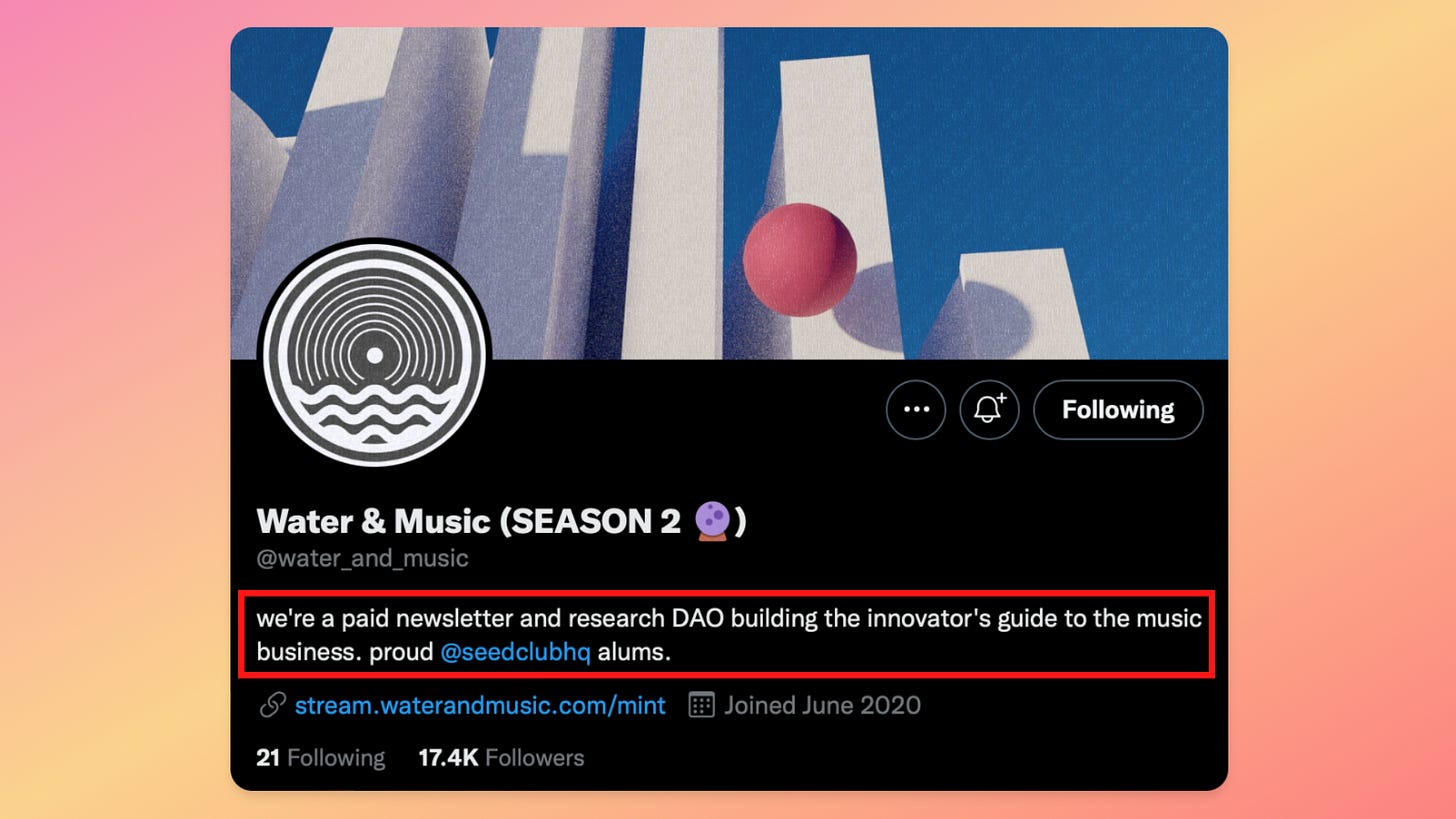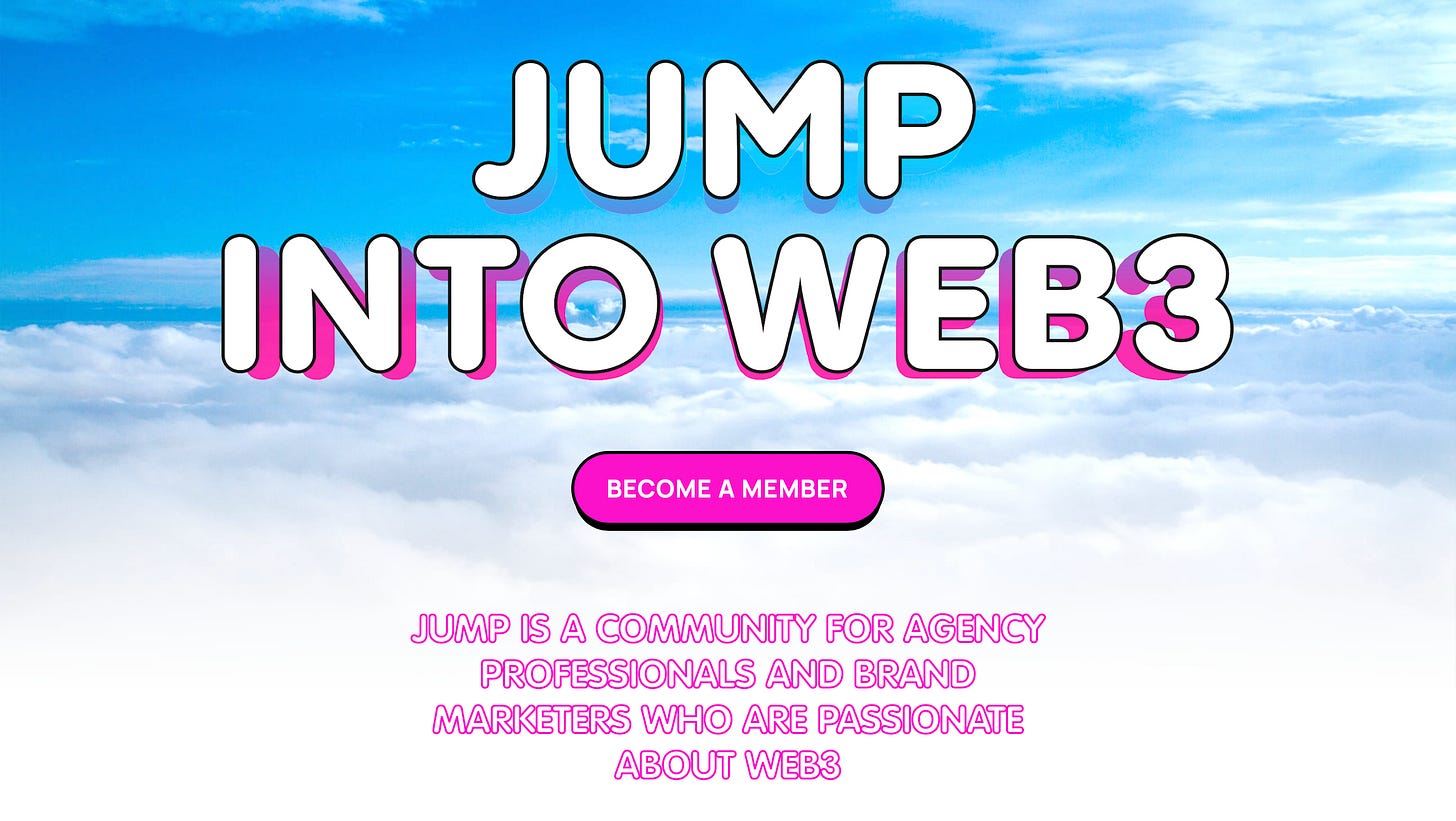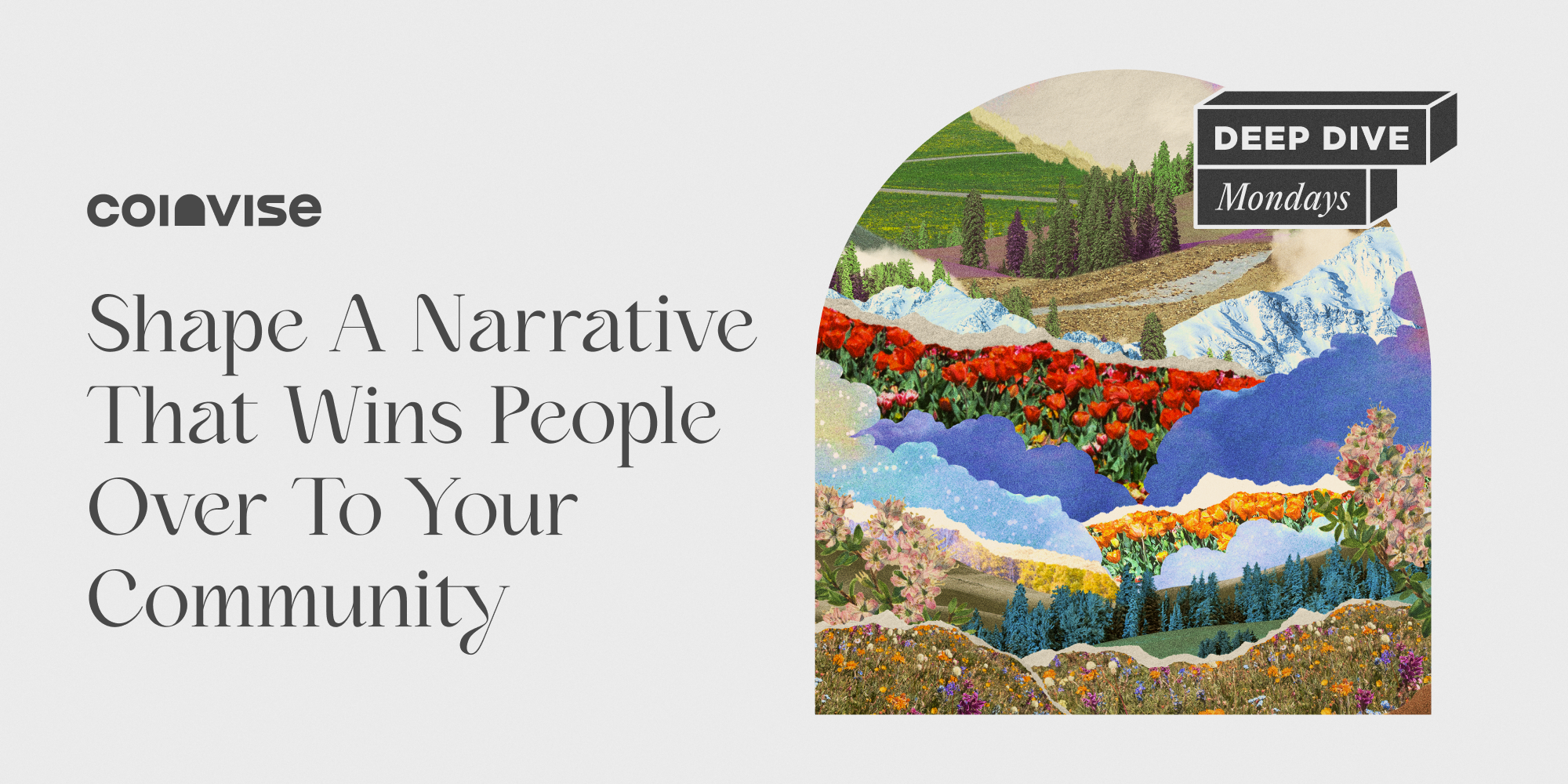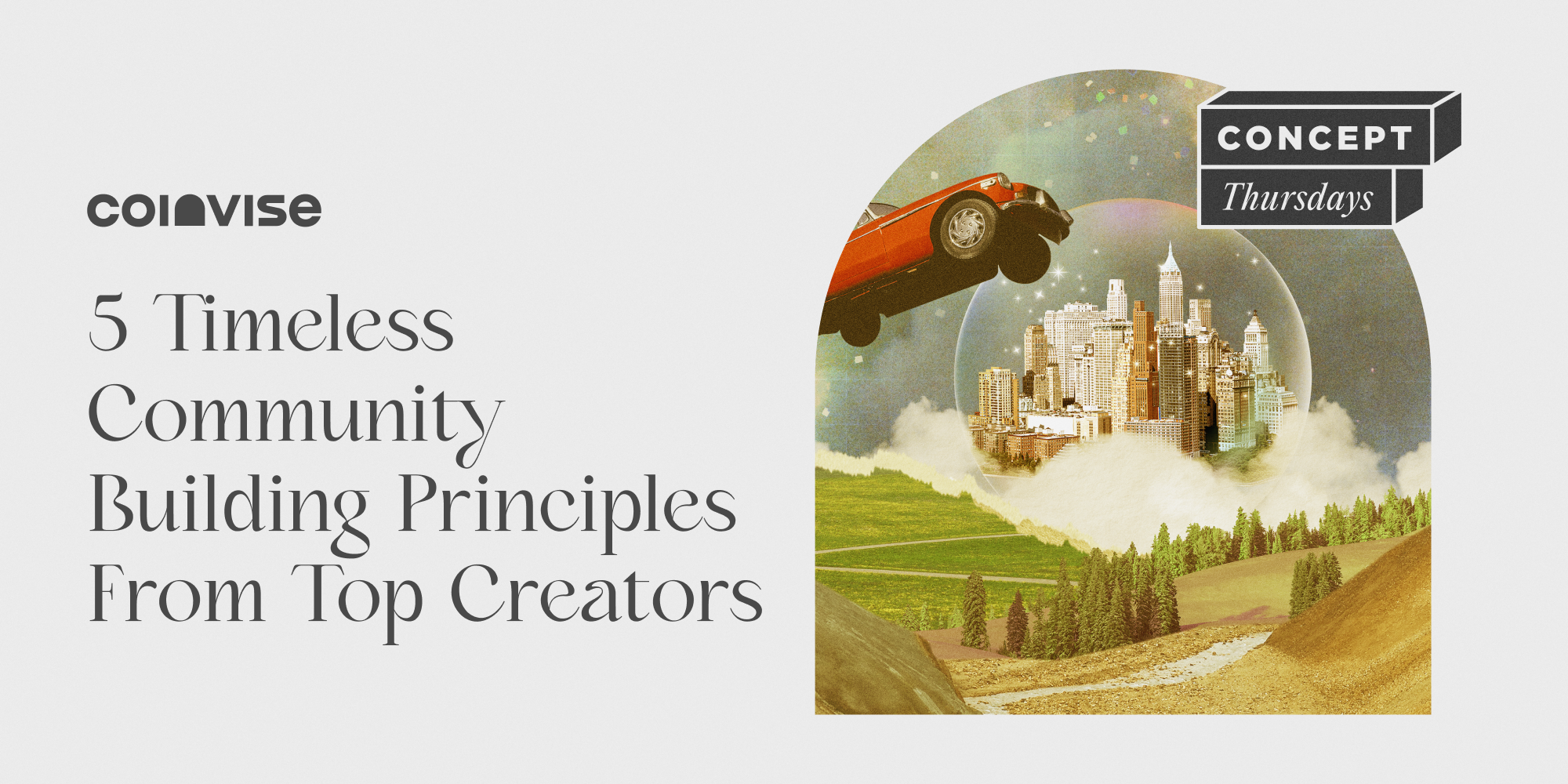Shape A Narrative That Wins People Over To Your Community
Hey everyone - we're back with another Deep-Dive Monday.
Today I'll show you how to create a clear narrative for your community.
A great story is one of the few things that have the power to touch deeper feelings and make people engage in your community in a meaningful way. If you succeed in coming up with a well-told story, you'll create enough VALUE to get complete strangers helping you achieve ambitious goals.
Unfortunately, I keep seeing community builders creating meaningless narratives, failing to show the problem the community is solving and why people should join them.
Great stories all have a "Who", "Why" and "How".
Because without those three elements, a narrative:
- Is too broad for anyone to identify with the problem
- Can't show precisely the future outcomes
- Is at best shared within the community between members
- Does not arouse any emotion
But writing a great story isn't complicated when you have the right framework.
At the end of today's deep-dive, you'll know precisely the 4 elements that make a great story, and people will soon run to join your community — Here's how:
Step 1: Define your persona (WHO)
People will bite on your story only if it's made *specifically* for them.
It's easy to think "YouTubers" is a clear niche.
But there are 100+ content categories on YouTube, ranging from beauty to fishing.
So when defining a persona - be really clear.
- Is this a community for creators?
- Or a community for beauty creators?
- Or a community for experienced beauty creators?
Notice how the modifier before your target drastically changes your perception of it.
Before they can consider joining your community, potential future members need to know if this is for them - or not.
To make this crystal clear, you need to use modifier words.
Step 2: Define Explicitely The Problem You're Solving (WHAT)
The second thing you need to be clear about is the problem you're trying to solve.
Sounds obvious — but 90% of the people who contact me for my advice fail this test.
They are always way too vague.
People often reach out to me asking for feedback on their community. Someone recently asked me my opinion on whether they should launch a community to:
"Help creators improve their web communication."
While I have no doubt this person can lead a community, the problem here is too vague.
No one will give this person their time to "improve their communication."
Because the problem they're trying to solve is not:
- Painful
- Urgent
- Acknowledged
A great narrative shows how your community solves the problem that keeps your potential future members up at night.
Because the only reason one will join your community is to solve the problems they cannot solve alone as individuals.
Beyond simply answering "What problem am I solving?" go beyond and answer:
- Why can't they solve this problem alone?
- Why is this problem urgent & important?
When building a story, highlight *explicitly* the problem you're solving for them.
Don't be vague and solve an ultra-generic topic, but be specific and show the problem's urgency.
Step 3: Define Precisely your Solution (HOW)
Members will only care and participate once they sufficiently understand why your community has a chance to solve their problem.
So, don't beat around the bush.
Your narrative should tell *exactly* how you solve their problem.
For example, instead of saying:
"We're the #1 musician community that empowers music creators to accomplish their dreams."
Say:
"We're a paid newsletter and research DAO building the innovator's guide to the music business."
Boom. Know they know what you're doing!

( - good job
A good exercise in pushing yourself to be clear about what you're doing is to try to explain this to your roommate, parents, or anyone who's not in your niche.
If they ask you to repeat, you don't actually know what it is you do and don't have a clear enough vision of what solutions you're providing to drive a whole community.
Step 4: Then give potential future members a full story arc to hold onto (SOLUTION)
Now that you've defined precisely the "Who", "What", and "How" of your community:
It's time to write a complete story around it.
You need to give potential future members a full story arc to hold onto:
- Here's who we are and where we're starting. [WHO]
- Here's the problem—and here's why it matters. [WHAT]
- Here's how we're going to solve this problem. [HOW]
- Here's how your life is going to be different as a result. [SOLUTION]
A great story should make the reader say, "Oh, that's exactly what I struggle with as well."
So your job is to pair these four elements with the classic storyline of great stories:
- Pain/Attention - Use a personal story or start with a problem
- Agitate - Share how things got worse and what happened to you/someone
- Intrigue - Show them a new perspective to think about what's intriguing
- Positive Future - Show the future benefits associated with the intrigue
And that's it.
If you can master the art of creating great narratives, you'll have people running to join your community and help you solve their problems.
Now, because it might still sound a bit too abstract for you, let's go over the narrative of a thriving internet community and see how they applied the four essential elements of a great story.

Jump Landing Page
The origin story of JUMP, recounted by its founder, Jeff Kauffman Jr., during the Coinvise Creator Stories:
1. Pain/Attention + Here's who we are and where we're starting [WHO]
"I was working at the largest independent advertising agency in the US, where we did about 1 billion in annual billings every year for the last 25 years."
2. Agitate + Here's the problem—and here's why it matters. [WHAT]
"As someone who worked on behalf of brands and was constantly trying to figure out strategies for them, I became incredibly frustrated with the work and the handcuffs that Facebook and YouTube had put on marketers and advertisers.
In 2020, I was massively fed up with everything that I was doing in Web2 and had to make a choice.
Either leave this industry entirely or figure out a way not to have handcuffs."
3. Intrigue
"That's when I came across the concept of Social Tokens, and when I became convinced another future was possible for marketers & advertisers.
I made a trends presentation about Web3, and everyone had the same response.
They were all like, "Wow, this future looks incredible, I think you're onto something, but Jeff, I have no idea where to start."
I noticed that this sentiment was mainly from brands and agencies.
They weren't quite ready for it."
4. Positive Future + Here's how we're going to solve this problem. [HOW] + Here's how your life is going to be different as a result. [SOLUTION]
"Seeing this, I joined the second cohort of the Web3 accelerator Seed Club and created the Jump Community.
I thought if I could create a tokenized community where agency people and marketers from Fortune 500 could meet and discuss with brands and marketers from Web3 startups, I might move this trend along even faster.
I created Jump as a community focused on educating agencies and brands on what Web3 is unlocking by having people learn by experience."
That's a great story, right?
No wonder why Jeff is now leading the biggest Web3 marketing & advertisers community with hundreds of members 😉
That's a wrap! You now have the keys to creating a narrative that brings people to your cause.
Here's a quick recap:
- Define your persona (WHO)
- Define explicitly the problem you're solving (WHAT)
- Define precisely your solution (HOW)
- Then give potential future members a full story arc to hold onto (SOLUTION)
I can't wait to see what you come up with!
Chat next Thursday!
– Eliot Couvat (@CDTEliot)


